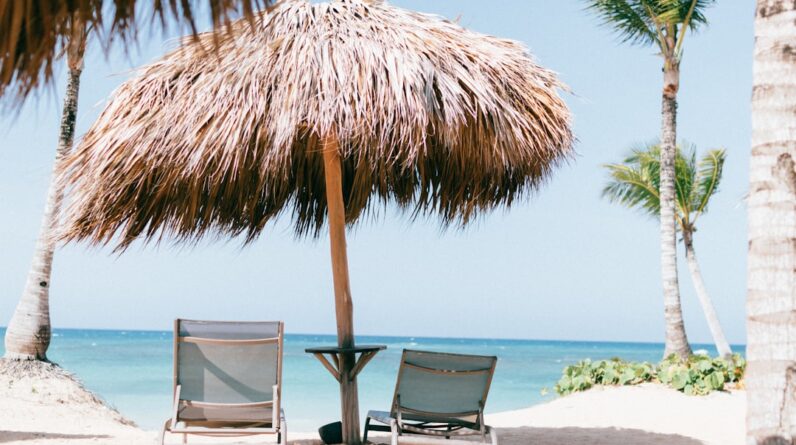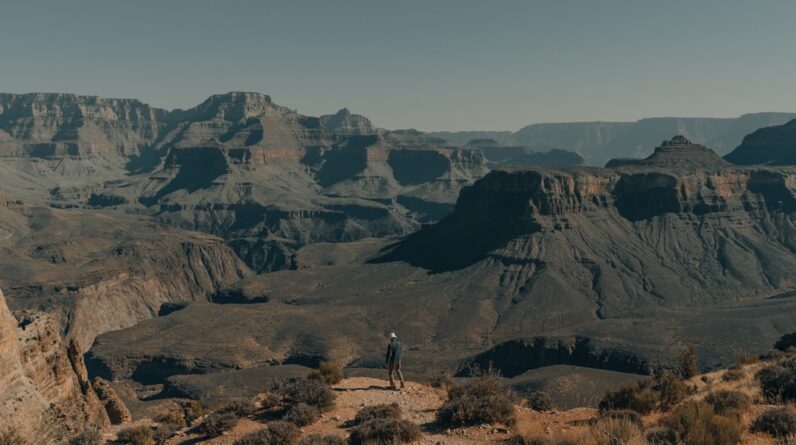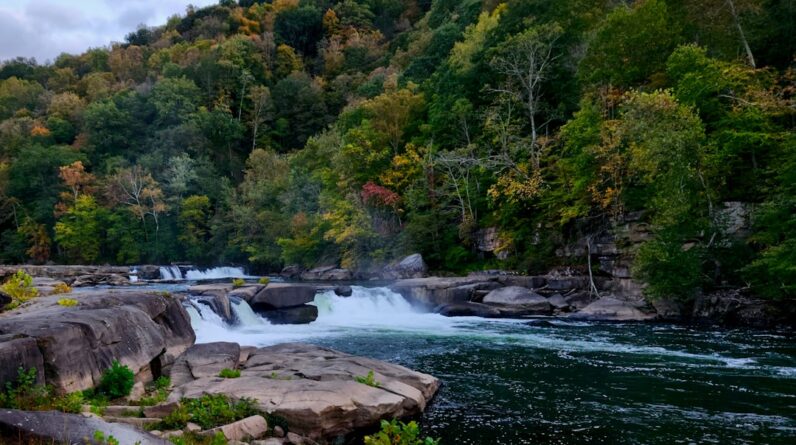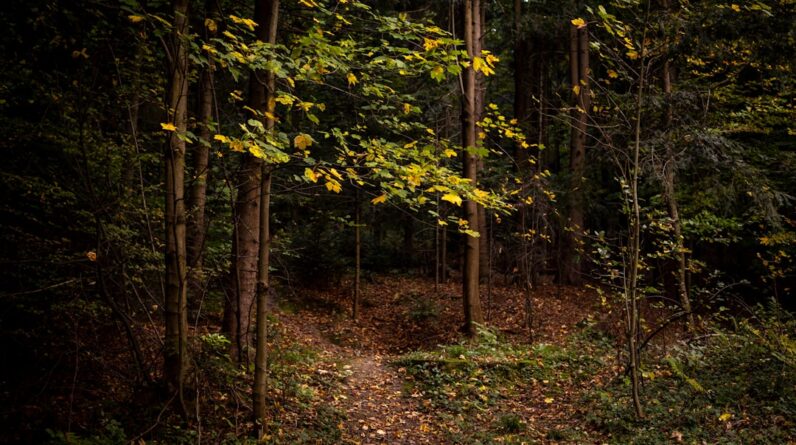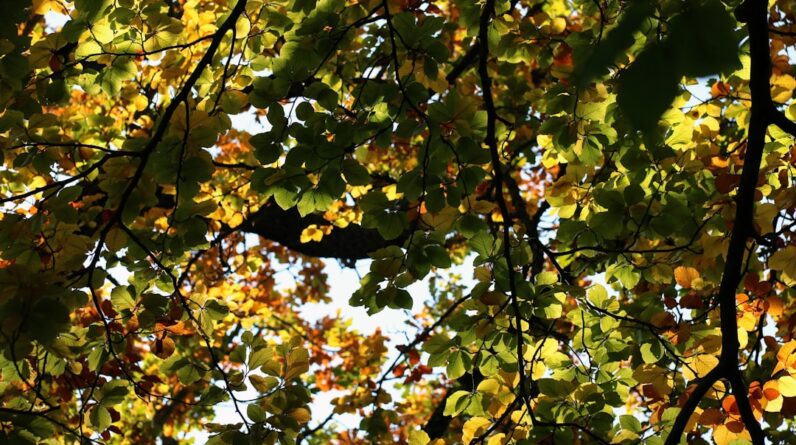Ontario’s Lake Circuit is a paradise for canoe enthusiasts. With its vast network of lakes, rivers, and waterways, this region offers endless opportunities for exploration and adventure. From the pristine wilderness of Algonquin Provincial Park to the historic routes of the Trent-Severn Waterway, there is something for everyone on Ontario’s Lake Circuit.
Canoeing has long been a popular activity in Ontario, and for good reason. The province’s abundant waterways provide the perfect setting for a peaceful and immersive outdoor experience. Whether you’re a seasoned paddler or a beginner looking to try something new, canoeing in Ontario offers a unique way to connect with nature and discover the beauty of the province.
In this blog post, we will take you on a journey through Ontario’s Lake Circuit, highlighting some of the most scenic and exciting canoe routes in the region. We will also provide tips and tricks for planning a successful canoeing adventure, as well as information on camping and accommodation options along the way. So grab your paddle and let’s dive in!
Key Takeaways
- Ontario’s Lake Circuit offers a variety of scenic and adventurous canoeing routes.
- Proper planning is key to a successful canoeing trip, including packing essentials and checking weather conditions.
- Algonquin Provincial Park is a must-visit destination for canoeists, with stunning lakes and wildlife.
- Paddling the Kawartha Lakes provides a glimpse into Ontario’s history and culture.
- Georgian Bay offers a unique and unforgettable canoeing experience with its rugged coastline and clear waters.
Planning Your Trip: Tips and Tricks for a Successful Canoeing Adventure
Before embarking on your canoeing adventure in Ontario, it’s important to plan ahead to ensure a successful and enjoyable trip. Here are some tips and tricks to help you make the most of your experience:
1. Choosing the right time to go: Ontario’s weather can be unpredictable, so it’s important to choose the right time to go canoeing. The summer months of June to August are generally the most popular, but they can also be crowded. Spring and fall offer cooler temperatures and fewer crowds, but be prepared for changing weather conditions.
2. Selecting the right gear: Having the right gear is essential for a comfortable and safe canoeing trip. Invest in a good quality canoe that suits your needs and skill level. Don’t forget to also pack essential gear such as life jackets, paddles, dry bags, and a first aid kit.
3. Packing essentials for a canoe trip: When packing for a canoe trip, it’s important to pack light and only bring the essentials. Some key items to include are: camping gear (tent, sleeping bag, cooking equipment), food and water, clothing suitable for the weather conditions, insect repellent, sunscreen, and a map or GPS device.
4. Planning your route: Before setting out on your canoeing adventure, it’s important to plan your route in advance. Research the different lakes and rivers in the area you wish to explore and choose a route that suits your skill level and interests. Consider factors such as distance, difficulty level, and available campsites along the way.
5. Safety considerations: Safety should always be a top priority when canoeing. Make sure to check the weather forecast before heading out and be prepared for changing conditions. Always wear a life jacket while on the water and let someone know your itinerary and expected return time. It’s also a good idea to take a canoeing course or brush up on your skills before embarking on a longer trip.
Exploring Algonquin Provincial Park: The Heart of Ontario’s Lake Circuit
Algonquin Provincial Park is often considered the crown jewel of Ontario’s Lake Circuit. With its pristine lakes, dense forests, and abundant wildlife, this park offers a truly immersive wilderness experience. Here are some highlights of canoeing in Algonquin Provincial Park:
1. Overview of Algonquin Provincial Park: Located in central Ontario, Algonquin Provincial Park spans over 7,600 square kilometers and is home to over 2,400 lakes and 1,200 kilometers of rivers and streams. The park is known for its rugged beauty and diverse ecosystems, including old-growth forests, wetlands, and rocky ridges.
2. Popular canoe routes in the park: Algonquin Provincial Park offers a wide range of canoe routes, from short day trips to multi-day expeditions. Some popular routes include the Barron Canyon, Canoe Lake to Smoke Lake, and the Big Trout Loop. These routes offer stunning scenery, opportunities for wildlife sightings, and a chance to immerse yourself in the park’s natural beauty.
3. Wildlife sightings in the park: Algonquin Provincial Park is home to a variety of wildlife, including moose, black bears, beavers, and loons. Keep your eyes peeled while paddling through the park’s lakes and rivers, as you never know what you might encounter. Remember to keep a safe distance from wildlife and never feed or approach them.
4. Camping and accommodation options: Algonquin Provincial Park offers a range of camping options, from backcountry campsites to front-country campgrounds. Backcountry camping requires a permit and offers a true wilderness experience, while front-country campgrounds provide more amenities such as showers and flush toilets. There are also several lodges and resorts located near the park for those looking for a more comfortable stay.
Paddling the Kawartha Lakes: A Scenic Route with Plenty of History
The Kawartha Lakes region is another must-visit destination for canoe enthusiasts in Ontario. With its interconnected system of lakes and rivers, this area offers endless opportunities for exploration and discovery. Here’s what you can expect when canoeing in the Kawartha Lakes:
1. Overview of the Kawartha Lakes: The Kawartha Lakes region is located in south-central Ontario and is known for its picturesque landscapes and rich history. The region is home to over 250 lakes, including Stoney Lake, Clear Lake, and Rice Lake, which are all interconnected by rivers and waterways.
2. Historical significance of the area: The Kawartha Lakes region has a rich history, with Indigenous peoples having lived in the area for thousands of years. The region was also an important transportation route for early settlers and played a significant role in the development of Ontario. Today, you can still see remnants of the area’s history, including old lock systems and historic buildings.
3. Popular canoe routes in the Kawartha Lakes: The Kawartha Lakes region offers a variety of canoe routes, ranging from short day trips to longer expeditions. Some popular routes include the Trent-Severn Waterway, the Kawartha Highlands Signature Site, and the Mississauga River. These routes offer stunning scenery, opportunities for fishing and swimming, and a chance to explore the region’s history.
4. Camping and accommodation options: The Kawartha Lakes region offers a range of camping options, from backcountry campsites to private campgrounds. There are also several resorts and cottages available for rent along the lakeshores. Whether you prefer roughing it in the wilderness or enjoying the comforts of a cottage, there is something for everyone in the Kawartha Lakes.
Discovering the Beauty of Georgian Bay: An Unforgettable Experience
Georgian Bay is a true gem of Ontario’s Lake Circuit. With its crystal-clear waters, rugged coastline, and remote islands, this area offers a truly unforgettable canoeing experience. Here’s what you can expect when exploring Georgian Bay:
1. Overview of Georgian Bay: Georgian Bay is located on the eastern side of Lake Huron and is known for its stunning natural beauty. The bay is home to over 30,000 islands, making it one of the largest freshwater archipelagos in the world. The area is characterized by its rocky shores, clear blue waters, and pristine wilderness.
2. Scenic canoe routes in the area: Georgian Bay offers a variety of scenic canoe routes, ranging from short day trips to multi-day expeditions. Some popular routes include the Massasauga Provincial Park, the French River Delta, and the Thirty Thousand Islands. These routes offer breathtaking views, opportunities for wildlife sightings, and a chance to explore the area’s unique geology.
3. Wildlife sightings in the bay: Georgian Bay is home to a diverse range of wildlife, including bald eagles, ospreys, otters, and turtles. While paddling through the bay’s islands and channels, keep your eyes peeled for these incredible creatures. Remember to respect their habitat and observe from a safe distance.
4. Camping and accommodation options: Georgian Bay offers a range of camping options, from backcountry campsites to island cottages. The Massasauga Provincial Park is a popular destination for backcountry camping, with several campsites accessible only by water. There are also several resorts and lodges located along the bay’s shores for those looking for a more comfortable stay.
Canoeing the French River: A Wilderness Adventure Like No Other

The French River is a true wilderness adventure like no other. With its rugged landscapes, historic trading routes, and abundant wildlife, this area offers a unique canoeing experience. Here’s what you can expect when canoeing the French River:
1. Overview of the French River: The French River is located in northeastern Ontario and is known for its rugged beauty and rich history. The river flows for over 100 kilometers from Lake Nipissing to Georgian Bay and is characterized by its rocky shores, rapids, and waterfalls.
2. Unique canoe routes in the area: The French River offers a variety of unique canoe routes, ranging from short day trips to longer expeditions. Some popular routes include the Upper French River, the Pickerel River, and the Key River. These routes offer stunning scenery, opportunities for fishing and swimming, and a chance to explore the area’s history.
3. Wildlife sightings in the river: The French River is home to a variety of wildlife, including moose, black bears, otters, and herons. While paddling through the river’s channels and rapids, keep your eyes peeled for these incredible creatures. Remember to respect their habitat and observe from a safe distance.
4. Camping and accommodation options: The French River offers a range of camping options, from backcountry campsites to lodges and resorts. The French River Provincial Park is a popular destination for backcountry camping, with several campsites accessible only by water. There are also several lodges and resorts located along the river for those looking for a more comfortable stay.
Exploring the Magnetawan River: A Hidden Gem for Canoeists
The Magnetawan River is a hidden gem for canoeists in Ontario. With its tranquil waters, scenic landscapes, and abundant wildlife, this river offers a peaceful and immersive canoeing experience. Here’s what you can expect when exploring the Magnetawan River:
1. Overview of the Magnetawan River: The Magnetawan River is located in central Ontario and is known for its pristine beauty and remote wilderness. The river flows for over 175 kilometers from Algonquin Provincial Park to Georgian Bay and is characterized by its calm waters, rocky shores, and dense forests.
2. Scenic canoe routes in the area: The Magnetawan River offers a variety of scenic canoe routes, ranging from short day trips to multi-day expeditions. Some popular routes include the Upper Magnetawan River, the Lower Magnetawan River, and the Ahmic Lake Loop. These routes offer breathtaking views, opportunities for wildlife sightings, and a chance to immerse yourself in nature.
3. Wildlife sightings in the river: The Magnetawan River is home to a variety of wildlife, including loons, otters, turtles, and muskrats. While paddling through the river’s calm waters, keep your eyes peeled for these incredible creatures. Remember to respect their habitat and observe from a safe distance.
4. Camping and accommodation options: The Magnetawan River offers a range of camping options, from backcountry campsites to private campgrounds. There are also several lodges and resorts located along the river for those looking for a more comfortable stay. Whether you prefer roughing it in the wilderness or enjoying the comforts of a lodge, there is something for everyone on the Magnetawan River.
Navigating the Trent-Severn Waterway: A Unique Paddling Experience
The Trent-Severn Waterway is a unique paddling experience in Ontario. With its historic locks, charming towns, and scenic landscapes, this waterway offers a truly unforgettable canoeing adventure. Here’s what you can expect when navigating the Trent-Severn Waterway:
1. Overview of the Trent-Severn Waterway: The Trent-Severn Waterway is a 386-kilometer-long canal system that connects Lake Ontario to Georgian Bay. The waterway consists of 44 locks, including the famous Peterborough Lift Lock, and is known for its historic significance and engineering marvels.
2. Popular canoe routes in the waterway: The Trent-Severn Waterway offers a variety of canoe routes, ranging from short day trips to longer expeditions. Some popular routes include the Kawartha Lakes Loop, the Severn River Loop, and the Rice Lake Loop. These routes offer opportunities to paddle through historic locks, explore charming towns, and enjoy scenic landscapes.
3. Historical significance of the area: The Trent-Severn Waterway has a rich history, with its construction dating back to the 19th century. The waterway played a crucial role in the development of Ontario, serving as a transportation route for goods and people. Today, you can still see remnants of this history, including old lock systems and historic buildings.
4. Camping and accommodation options: The Trent-Severn Waterway offers a range of camping options, from backcountry campsites to private campgrounds. There are also several marinas and resorts located along the waterway for those looking for a more comfortable stay. Whether you prefer roughing it in the wilderness or enjoying the comforts of a resort, there is something for everyone on the Trent-Severn Waterway.
Camping and Accommodations: Finding the Perfect Spot to Rest and Recharge
When embarking on a canoeing adventure in Ontario, finding the perfect spot to rest and recharge is essential. Here are some tips for finding the perfect camping and accommodation options along your journey:
1. Overview of camping and accommodation options in Ontario: Ontario offers a wide range of camping and accommodation options, from backcountry campsites to luxury resorts. Whether you prefer roughing it in the wilderness or enjoying the comforts of a hotel, there is something for everyone in Ontario.
2. Types of camping and accommodation options available: In Ontario, you can choose from a variety of camping options, including backcountry camping, front-country camping, and private campgrounds. Backcountry camping offers a true wilderness experience, while front-country campgrounds provide more amenities such as showers and flush toilets. There are also several lodges, resorts, and cottages available for rent along the lakeshores.
3. Tips for finding the perfect spot to rest and recharge: When looking for a camping or accommodation spot, consider factors such as location, amenities, and cost. Research different options in advance and read reviews from other travelers to get an idea of the quality and suitability of each spot. Look for locations that are close to the activities or attractions you plan to visit, as this will save you time and transportation costs. Additionally, consider the amenities offered at each spot, such as showers, toilets, and cooking facilities, to ensure your comfort during your stay. Finally, compare the costs of different spots to find one that fits within your budget. By taking these factors into account and doing thorough research, you can find the perfect spot to rest and recharge during your trip.
If you’re planning a canoeing adventure in Ontario, you won’t want to miss out on the breathtaking Lake Circuit. This dream itinerary takes you through some of the most stunning lakes in the region, offering unparalleled beauty and tranquility. As you paddle through crystal-clear waters and immerse yourself in nature, it’s important to take care of your overall health. In a related article, “Sunset Smiles: Dental Care Tips for the Older Generation,” you can find valuable advice on maintaining good oral health while enjoying your outdoor pursuits. From proper brushing techniques to the importance of regular dental check-ups, this article provides essential tips for keeping your smile radiant throughout your canoeing journey. Don’t forget to check it out for a healthy and happy adventure! Read more
FAQs
What is Ontario’s Lake Circuit?
Ontario’s Lake Circuit is a popular canoeing route that covers over 1,200 kilometers of interconnected lakes and rivers in Ontario, Canada.
What is the best time to go on the Ontario’s Lake Circuit?
The best time to go on the Ontario’s Lake Circuit is from May to September when the weather is warm and the water is calm.
How long does it take to complete the Ontario’s Lake Circuit?
It takes approximately 30 to 40 days to complete the entire Ontario’s Lake Circuit, depending on your pace and the number of stops you make along the way.
What are some of the highlights of the Ontario’s Lake Circuit?
Some of the highlights of the Ontario’s Lake Circuit include the stunning scenery, the abundance of wildlife, the peacefulness of the lakes, and the opportunity to experience the rich culture and history of the region.
What kind of equipment do I need for the Ontario’s Lake Circuit?
You will need a canoe or kayak, paddles, life jackets, camping gear, food, and water purification equipment for the Ontario’s Lake Circuit. It is also recommended to bring a map and compass, as well as a GPS device.
Do I need a permit to go on the Ontario’s Lake Circuit?
Yes, you will need a permit to go on the Ontario’s Lake Circuit. Permits can be obtained from the Ontario Parks website or at the park office.
What are some safety tips for the Ontario’s Lake Circuit?
Some safety tips for the Ontario’s Lake Circuit include wearing a life jacket at all times, checking the weather forecast before setting out, bringing a first aid kit, and avoiding paddling alone. It is also important to be aware of the wildlife in the area and to store food properly to avoid attracting animals.



